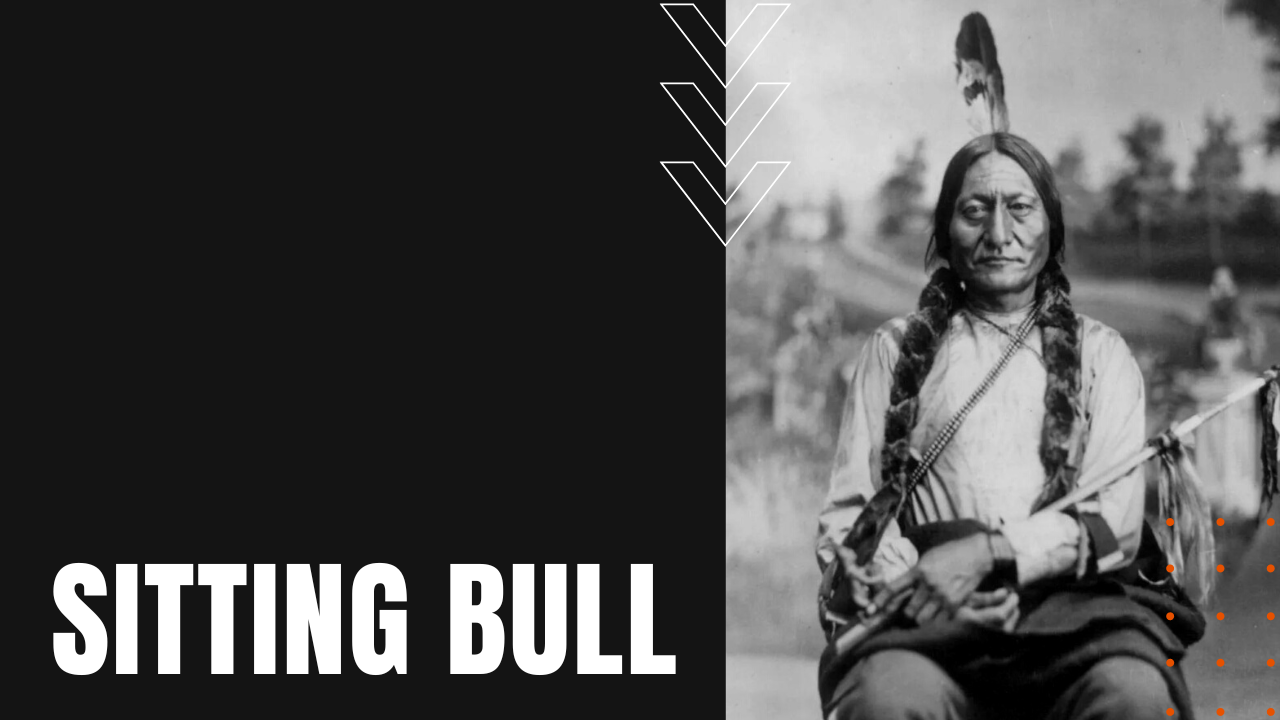Sitting Bull

Born in the Dakota Territory in 1831, Sitting Bull proved himself in battle at the 1862 Minnesota Uprising against the U.S. Army, followed by the Battle of Killdeer Mountain in the summer of 1864.
Supreme Leader of Lakota Sioux
For his bravery and budding leadership skills, Sitting Bull was made a supreme leader of the Lakota Sioux after his refusal to sign the Fort Laramie Treaty of 1868, which created the Great Sioux Reservation west of the Missouri River, including the Black Hills of South Dakota.
Peace was short-lived, however, when in 1874, gold was discovered in the Black Hills, and after Euro-American settlers poured onto sacred Indian land, Sitting Bull refused to move his people 240 miles in winter when the U.S. government redrew the reservation’s boundary lines.
In response, Sitting Bull cobbled together a force of Arapaho, Cheyenne and Sioux warriors, winning a decisive victory in the 1876 Battle of Rosebud, led by U.S. Army General George Crook, and after Sitting Bull came out of a 36-hour trance at a Sun Dance ceremony, he told tribe members of his vision about U.S. soldiers dropping like grasshoppers from the sky.
Battle of Little Bighorn
On June 25th of that same year, Sitting Bull and Crazy Horse led some 3,000 warriors to victory at the Battle of the Little Bighorn, which saw the slaughter of 600 U.S. soldiers under the command of General George Custer.
After the U.S. government doubled down on their efforts to eradicate the Sioux, Sitting Bull moved his people to safety in Canada, before surrendering to the U.S. Army in the summer of 1881, in exchange for amnesty for his people.
Imprisoned in South Dakota’s Fort Randall for two years, Sitting Bull was moved to the Standing Rock Reservation, before joining Buffalo Bill Cody’s Wild West Show in 1885, where he performed alongside Annie Oakley on a nostalgic traveling show about the romanticized life during the bygone days of the wild west.
Death of Sitting Bull
When the Ghost Dance Movement swept through Standing Rock Reservation—whose followers believed that dead tribe members would rise up alongside slaughtered buffalo, returning their lands from white settlers—when Indian police attempted to arrest Sitting Bull at his cabin on the morning of December 15th, 1890, he was shot and killed in retribution after a young tribe member killed one of the policemen.
Buried initially at Fort Yates Military Cemetery in North Dakota, in 1953, his remains were moved by family members to Mobridge South Dakota, making the life and bravery of Sitting Bull, one of the most notable figures in the final chapters of the American Indian Wars.
